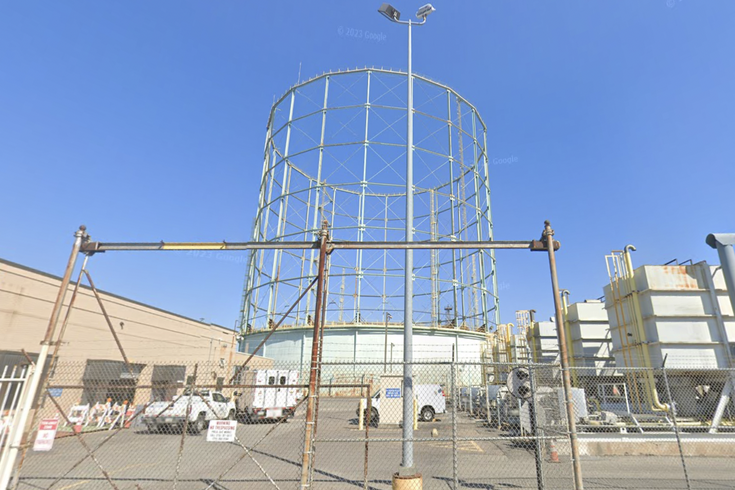
August 17, 2023
 StreetView/Google Maps
StreetView/Google Maps
Philadelphia Gas Works is dismantling the gasometer structure that was built in 1954 at its Liquefied Natural Gas Processing Plant in Port Richmond.
Motorists on I-95 may have wondered what that unusual, circular cage structure is off the highway in Port Richmond.
The 212-foot-tall tank is a gasometer, a structure once used to control and measure the pressure of natural gas before it was delivered to residents and businesses in the city. It was built in 1954 at the Philadelphia Gas Works Liquefied Natural Gas Processing Plant on Venango Street, just off Delaware Avenue.
PGW began dismantling the gasometer, known as Gas Holder No. 11, in June. The work is expected to be complete by October. The tank has been decommissioned since 2021.
Gasometers became common features of industrial landscapes in the 19th century. The cage-like structures act as frames for fuel chambers that rise and fall based on the amount of pressure and gas inside the containers.
The original purpose of gasometers largely was replaced by the popularity of natural gas and the development of underground transmission pipelines that can store and deliver fuel under pressure. The steel gasometer in Port Richmond was built for natural gas storage to remove the need for continuous gas production. It also controlled the pressure of natural gas in PGW's distribution mains.
PGW said the demolition of Gas Holder No. 11 will save money by eliminating maintenance costs. It also will improve the safety and sustainability of the site.
Gasometers at many industrial sites have been demolished in recent decades since they no longer serve a useful purpose, although some have been preserved as historic landmarks. The video below offers an explanation of how gasometers traditionally worked.
PGW said the dismantling of Gas Holder No. 11 will not increase traffic, safety concerns or air pollution in the surrounding area.